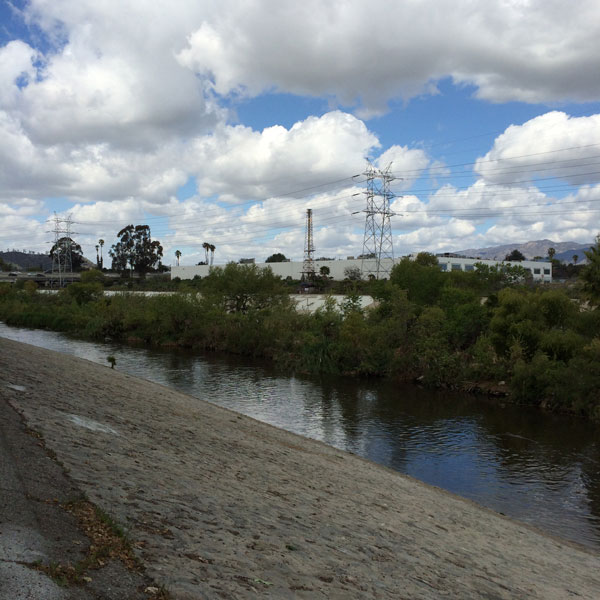New CSUN Center to Connect Campus and the Community In Effort to Develop a More Resilient Urban Water Supply

The Los Angeles River. Photo courtesy of Mike Antos
Despite rising temperatures, Californians this summer cut their water use significantly in an effort to help the state deal with a severe, ongoing drought.
The reduction for two straight months — by more than 31 percent in July alone –caught many officials by surprise, but not Mike Antos, director of California State University, Northridge’s new Center for Urban Water Resilience. Antos, former programs director for the Council for Watershed Health, noted that most policymakers underestimated how responsive the public would be once it realized how serious the state’s water situation was.

Mike Antos
“There’s something fundamentally different in our human relationship with water than our relationship with other resources, and it changes the conversation,” he said. “It puts people in a more collaborative, cooperative spirit when you are talking about water. The response to the drought, the overwhelming response to the ‘cash for grass’ programs [that offer rebates for replacing water-consuming landscaping] are examples of the community stepping up to the challenge. The community response has been powerful. Californians get it, and that community knowledge sometimes is discounted and shouldn’t be.”
Tapping into that knowledge to help the region and state get a handle on the impact of the drought — and help develop plans for how urban areas respond to issues created by a less-certain water supply — is why CSUN’s Center for Urban Water Resilience was created, Antos said.
“We really are focused on people’s relationship with water and with one another in relation to water, how we can draw from the strengths that are already there and change those things that need to be changed,” he said.
The center was established earlier this year in CSUN’s College of Social and Behavioral Sciences as a way to build a bridge between those at CSUN doing social research with implications for California’s water, and those in the community dealing directly with water issues. By working together, Antos said, university researchers and community members may be able to find solutions to water problems that are unique to urban environments, like the Los Angeles region.
“A resilient community has the capacity to respond to and recover from both acute and chronic challenges, and urban communities confront specific water-related challenges,” Antos said. “This drought is one example, and the potential for a rainy winter is another. There are others, less well known, like pollution and trash carried by rain runoff, legacy pollution in groundwater basins, and the risks of floods big and small. All of these challenges exist today, and likely will be made more difficult by climate change.
“In Los Angeles, the urban water challenges are distinct compared to other environments,” he said, noting that local groundwater provides only minimal amounts of drinking water, today up to 87 percent of Los Angeles’ water has been imported. Historically, local water was the lifeblood of the region.
“In the short term, we face continued water shortages throughout the state brought on by the drought. Longer-term, California communities will together face climate change-related water challenges that will have far-reaching impacts,” Antos said. “Our efforts at the center will create social connectivity to solve urban water problems, and develop a better understanding of the hydro-social implications of living in an urban environment.”
The center already has reached out to Los Angeles Mayor Eric Garcetti’s office and developed a way for CSUN faculty and students to assist with Los Angeles River Revitalization efforts, including figuring out how to open more stream bank miles to public access. The center is working with local conservancy groups, as well as other governmental and community agencies that are doing water-related work.
“We are here to help facilitate interdisciplinary research, conversations and learning about social water with CSUN students, staff and faculty, community members, involved government agencies, community foundations, really, anyone and everyone who wants to join us,” Antos said. “The key is bringing people together so they can talk and work together to come up with solutions. Working together to solve problems also builds community resilience.”
Regardless of whether forecasts for a fierce El Niño come true this winter or not, he said the drought will have repercussions in the state for years. But, Antos said, how Californians are stepping up during the drought is a large ray of hope.
“There is no question that California is deeply challenged by this drought,” he said, “but there remain many opportunities to eliminate inefficiency in our system. We do have challenges to overcome, but we’re learning that together, we are up to some pretty big challenges.”

 experience
experience